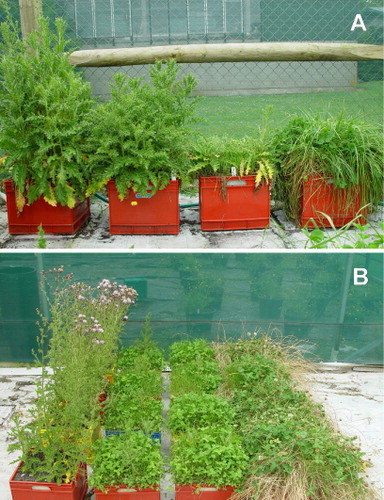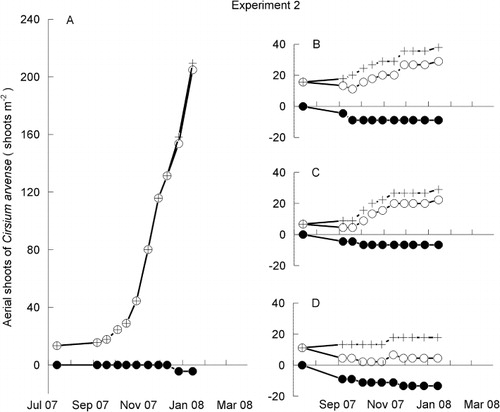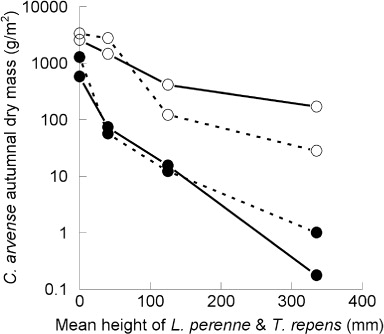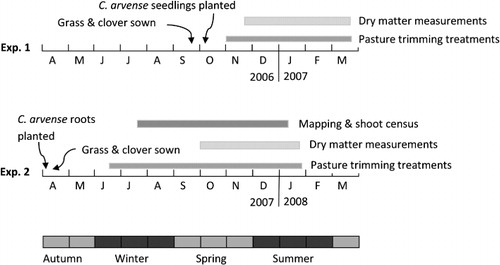Figures & data
![Figure 2 Growth responses (log10[g dry mass/m2] averaged over four replicates) of the creeping roots (A, C) and subterranean shoots (B, D) of Cirsium arvense to the presence of neighbouring pasture species Lolium perenne and Trifolium repens maintained at different heights in Experiments 1 and 2: No pasture (Display full size); Short pasture (Display full size); Long pasture (Display full size); Hay (Display full size). The two vertical bars are the two LSD (5%) values for the trimming treatment by harvest time interaction table as output by an analysis of variance for a split-plot design. The right-hand bar is for any comparison between times of harvest means for a particular trimming treatment. The left-hand bar is for any other comparison of means, including the comparison of trimming treatment means for a particular time of harvest. The x-axis labels align with the first day of the month.](/cms/asset/30508cf8-4f32-47e8-84ab-5eb0e2a28ea8/tnza_a_941507_f0002_b.jpg)
![Figure 3 Growth responses (log10[g dry mass/m2] averaged over four replicates) of the aerial shoots of Cirsium arvense (A, D) and the neighbouring pasture species Lolium perenne and Trifolium repens (B, E) where the latter were maintained at different heights, and the percentage contribution that C. arvense made to the total sward (C, F) in Experiments 1 and 2: No pasture (Display full size); Short pasture (Display full size); Long pasture (Display full size); Hay (Display full size). In D and F, values for the ‘Hay’ treatment were mostly zeroes and are excluded from the analyses. The two vertical bars are the two LSD (5%) values for the trimming treatment by harvest time interaction table as output by an analysis of variance for a split-plot design. The right-hand bar is for any comparison between times of harvest means for a particular trimming treatment. The left-hand bar is for any other comparison of means, including the comparison of trimming treatment means for a particular time of harvest. In C and F, the error bars exclude the ‘No pasture’ treatment where the sward was always 100% C. arvense. The x-axis labels align with the first day of the month.](/cms/asset/31f356ed-fade-4955-8d1d-682b58997645/tnza_a_941507_f0003_b.jpg)


Table 1 Cumulative total numbers of aerial shoot births and deaths and net population size (shoots/m−2) at the end of Experiment 2 as illustrated in . For calculating the linear contrast, average pasture heights were taken to be 0, 40, 125 and 335 mm for the four treatments, respectively (in the order shown in the table).


